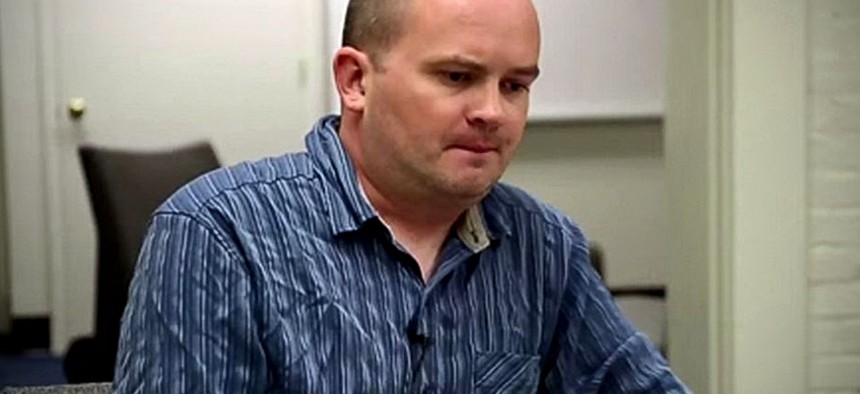Mikey Dickerson: No Paper Pushing at US Digital Service

Mikey Dickerson the new administrator of the U.S. Digital Service. White House/Youtube.com
The head of the U.S. Digital Service is taking a fix-it first approach to his office.
Mikey Dickerson has already bucked Washington convention with his rumpled shirts and notable lack of neckwear.
Now, the head of the U.S. Digital Service, a newly formed White House office responsible for improving government technology projects, is putting the federal IT community on notice: Don’t expect any paper pushing from his office.
“Our primary work product is not memos and advisory statements and new processes and stuff like that. It’s actual working, functioning services,” Dickerson said during a Sept. 12 meeting of the President’s Management Advisory Board.
Dickerson, a former Google engineer, knows the fix-it mentality well, having taken the lead role in repairing the floundering HealthCare.gov.
He said the U.S. Digital Service, still in pilot mode at the Office of Management and Budget, will be equal parts early-warning detection center and rapid-response tech triage unit.
Office Aims to Be ‘Navy Seals’ of Government Tech
HealthCare.gov is “Exhibit A” in the case for such an office, he said.
“We didn’t have any group to perform the function of -- not to sound too grandiose -- like the Navy Seals or the Special Forces, where when there’s a problem, they go to the problem without preconditions, without stopping to consider whether this mission’s too hard or whether it can’t be done,” he said. “If you tell them to go, they go.”
That differentiates the new office from the General Services Administration’s 18F office and the teams of Presidential Innovation Fellows -- now in the program’s third year -- who remain focused more on helping agencies scale out and build new projects and services from scratch.
"Everybody wants to start with a blank slate and a green field and build the next great thing that’s going to be awesome and make all the decisions along the way -- that’s the job everybody wants,” Dickerson said. “But the job that not as many people want is: Somebody already built this thing and it’s not working at all, and it’s really important, so somebody needs to fix it."
Office Focused on Putting Out Fires -- Not Policy
The firestorm over HealthCare.gov’s malfunctions touched off a flurry of reform efforts, including revamping the way the feds purchase IT and reforming the recondite federal hiring process that has made it difficult for outsider tech experts to join government.
Federal Chief Information Officer Steven VanRoekel, also speaking at the Sept. 12 meeting, said the Obama administration is looking to continue to expand flexible hiring authorities to enable agencies to bring technologists on board quicker.
“Technology hiring has grown about four times the rate of other kinds of hiring in our country, and government has a hard time competing in the space when our hiring timelines are hundreds of days [and] our compensation maybe doesn’t match,” VanRoekel said.
Dickerson said he supports such reform efforts -- but that’s not the immediate focus of his office.
“I'm looking at a landscape right now, which is littered with, like, the corpses of well-intentioned reform efforts that have come for the last 20 years,” he said.
Many of those failed past efforts are now just another obstacle in his way, he said.
“That's why we're not convening meetings and writing recommendations for the legislative team, right now,” he added. “That's not what my team is spending its time on. I hope that day comes, but right now we've got fires to put out, basically."
One of those fires -- the federal government’s creaky budgeting process -- has already gotten the better of him, Dickerson said.
"Having been here for four weeks, the budget process has burned me," he said.
"I heard a couple people mention agile development and a bunch of heads nodded, so everybody, I guess, knows what that is,” he said. “Our budget process is the antithesis of agile."





